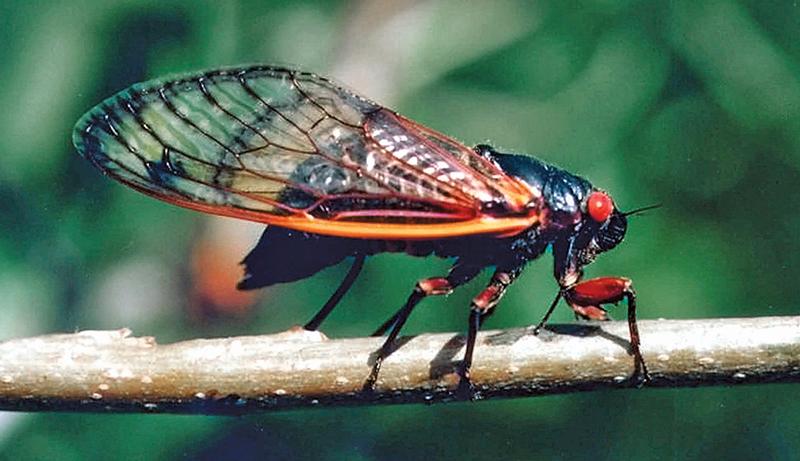Not according to Thomas O’Dell, natural areas and collections specialist for Matthaei Botanical Gardens and Nichols Arboretum. The last time Brood X emerged, seventeen years ago, O’Dell remembers walking through a stand of buckeye trees in the Arb with a coworker and seeing thousands of cicadas swarming on the branches and trunks. Their chorus was so loud they couldn’t hold a conversation, even while standing a few feet from each other.
But that was the worst of it. “As insect infestations go, cicadas are as benign as possible,” O’Dell stresses. Unlike locusts, which swarm in vast numbers and devastate crops and vegetation, “Brood Ten cicadas are harmless to humans and pets. They don’t bite, and they only do minor damage to young trees.”
Southeast Michigan is the northernmost outpost of Brood X, one of the largest of the fifteen numbered broods active in North America. Their relatives will join a chorus that stretches as far east as Long Island, as far south as Georgia, and as far west as Illinois.
A 1961 paper by U-M professors Richard Alexander and Thomas Moore established that seventeen-year and thirteen-year broods each include three different species of genus Magicicada. University of Connecticut cicada expert John Cooley, who worked with Alexander as a grad student, says that Moore, now ninety-one, can identify all six species by their songs (Alexander died in 2018).
Magicicada adults have distinctive black bodies, red eyes, and red wing veins. But they spend 99 percent of their lives underground as nymphs, dining on tiny tree roots. When the time finally comes, they drill finger-size holes to the surface, creating small mounds of soil called turrets. There they shed their final juvenile cases, crawl up nearby trees, feed on plant saps and juices from small branches, and sing to attract mates.
After mating, females lay their eggs on small twigs, which eventually drop to the ground, beginning the cycle again. The open-air phase of their lives is remarkably short: five or six weeks.
“Scientists don’t know why this species of cicada appears so infrequently but so regularly,” O’Dells says. “One theory is that they mature very slowly underground and emerge in such vast numbers that predators cannot possibly eliminate them all, thereby ensuring the survival of the species.
“Don’t necessarily expect them to appear in your yard,” he adds. “They’re woodland creatures. Check under your trees. Lots of holes mean lots of cicadas.”
Because cicadas do little damage, O’Dell urges homeowners not to use insecticides to kill them. “If you’re concerned about small or vulnerable trees, and you see a lot of holes in the ground nearby, cover the trees with lightweight nylon netting that allows sunlight and rain to penetrate. Secure the netting at the trunk.”
Moore documented growth spurts in forests the year following a periodical cicada emergence. He suggested that their holes aerate the soil, allowing air, sunlight, water, and nutrients to penetrate the ground more rapidly.
And that’s not all they’re good for. “Insects made up a large part of Native American diets,” O’Dell notes. “I understand cicadas are crunchy and crispy.” He laughs, “I’m debating about trying to eat them myself.
“There’s a lot of protein packed in those little bodies. And they’re probably not worse than some of the things Americans do eat.”
